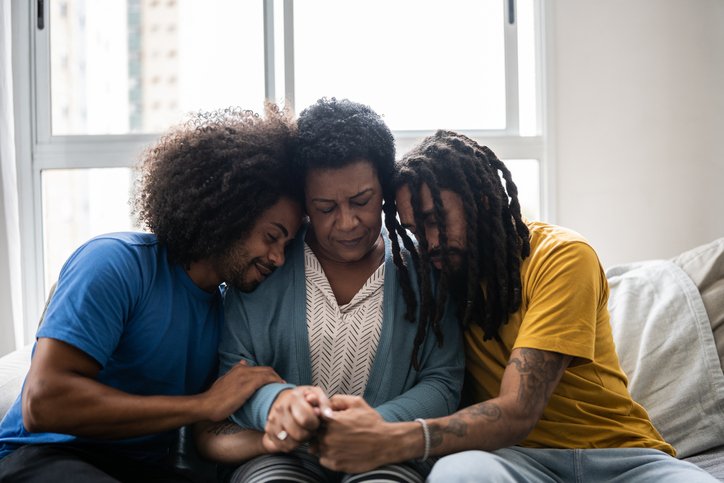
I lost my fiancé to COVID-19 in April 2020. Statistics and numbers being displayed on the television and social media at the time were detailing the horrible deaths that were the result of the pandemic. The graphics, bar charts, and similar visuals did not explain the full picture. The commentary was bleak: filled with stories of the sick, the short-staffed nursing units, and patients who were waiting to die while filling the hallways of the emergency room.
I lost my fiancé to COVID-19 in April 2020. The graphics, bar charts, and similar visuals did not explain the full picture. They were mere numbers — without their personal stories attached. Click To TweetThe death count numbers were shared on a nightly news channel. For me it felt obvious: They were mere numbers — without their personal stories attached. I was suffering. Others were suffering. The count rose with no end in sight. Yet at one point, I felt that people were looking at the news like zombies. Some were tuning in daily for the next “count” of individuals to die, while others like myself were in agony looking at the death toll continue to rise right before our eyes.
My fiancé was number 320 (or something close) in the county in which we live. I know this because there was a running tally on our local news site. With tears in my eyes, I wondered how many more people would have to die. People were relegated to just a number. Let me say that again: People were relegated to just a number!
The nameless faces were growing. I used to think about what those faces looked like as the numbers rose. Who were these people? Did they have families? What were their ages? What happened? Was their experience like my beloved one’s? But most importantly: What were their stories, behind all of these other attributes? The nameless faces haunted me at night. I kept wanting to compare them to my fiancé, David.
Statistical data can be tricky. It gives the scientific perspective, but numbers never tell the full picture. I have lost more than 15 family members and friends to this virus. While having discussions with some of my coworkers of other races, I noticed something strange. Most of my white colleagues had not lost anyone to COVID. They did not know of anyone who had. I struggled to find people who did not share my racial identity in the workplace who could truly understand my pain. I began to think: Was COVID only killing people that look like me?
Most of my white colleagues had not lost anyone to COVID. I struggled to find people who did not share my racial identity in the workplace who could truly understand my pain. Was COVID only killing people that look like me? Click To TweetData collected about race and ethnicity of those impacted by COVID-19 remains incomplete; as of September 27, 2022, The Centers for Disease Control and Prevention (CDC) have reported a total of over 88 million cases of COVID-19, for which race/ethnicity is known for 65 percent or nearly 59 million. However, it has become abundantly clear that across case numbers, hospitalizations, and deaths, BIPOC communities have been disproportionately impacted by COVID-19.
BIPOC communities have been disproportionately impacted by COVID-19. Even as the numbers clarify these disparities, they don't reflect the human component behind those numbers that have affected so many people. Click To TweetAgain, even as the numbers clarify disparities at play, they remain numbers reflecting factual data — not the human component behind those numbers that have affected so many people.
What narrative are we being told? Whose story is it to tell?
As a woman who has suffered such great loss, I look at the numbers of people we have lost and wonder: If more of the stories amplified were told by historically marginalized communities, what would those stories tell us? Would a more human lens be added to the devastation that we have experienced over the last couple of years?
If more of the stories amplified were told by historically marginalized communities, what would those stories tell us? Would a more human lens be added to the devastation that we have experienced the last couple of years? Click To TweetStats can be helpful in getting a baseline of information, but let’s not forget that there was a human behind every death count, a person who deserved to be honored and not just counted for the sake of numbers.


















